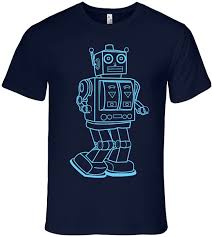A friend recently came across an interesting article in the Washington Post. The headline was sort of creepy: Slowly but surely, robots will wind up in our clothes. I mean, who wants a robot in their clothing? But the article was a good roundup of what’s happening where “in university labs across the world, material scientists, computer programmers and fabric designers are working to advance robotic clothing at a rapid pace.” And these labs are focusing, for the most part, on life-enhancing applications.
In the coming decade, scientists said, customers can expect a whole range of futuristic offerings: pants that can help lift elderly or disabled people up; athletic socks that can promote blood flow through automatic compression; maternity clothes that could passively track fetal heart rates to improve pregnancy outcomes.
The technology that will be deployed varies. Scientists have developed “robotic textile fibers, which can make fabric move automatically.” They’ve created threads that are programmable, and used battery gels to make fiber batteries, which will “power robotic textiles.”
Australian researchers have come up with yarn-sized silicon tubes, patterned on muscle fibers. When embedded in fabric, electronic or thermal stimulation lets the fabric change shape. (So far, the challenge here is making the robotic tubes small enough to be woven into fabric without bulking it up. “Yarn-sized” sounds small, but to really get this to work, they need to make the tubes substantially smaller.)
Adding computer power to fabrics will make a real difference when it comes to applicability. This will make the fabrics capable of responding to physiological cues and processing data – e.g., skin temperature – and telling the clothing what to do next – e.g., cool things down or warm things up. MIT has some research going that has resulted in “fibers with hundreds of silicone microchips to transmit digital things.”
These fibers are small enough to pass through a needle that can be sown into fabric and washed at least 10 times. Others at the institute [MIT] have also created rechargeable lithium-ion batteries in the form of an ultralong fiber that can be woven into fabric, powering textiles without an external power source.
Before robotic fabrics are more widely used, things like durability will need to be improved on. (Fast fashion consumers aside, most of us expect to be able to wash a clothing item more than 10 times.) So will things like fabric feel and drape. Weight, as noted earlier, will also be an issue. Clothing that feels like you’re wearing a suit of armor won’t become especially popular.
But robotic clothing is coming. And while some of the applications won’t be all that important or useful, many of them will be. Assistive clothing that will improve everyday life for the elderly and the disabled. Clothing that monitors health markers that make wearables truly wearable. All very exciting.
I’ve said it before and I’ll say it again. Life-enhancing innovations make me proud to be an engineer.
